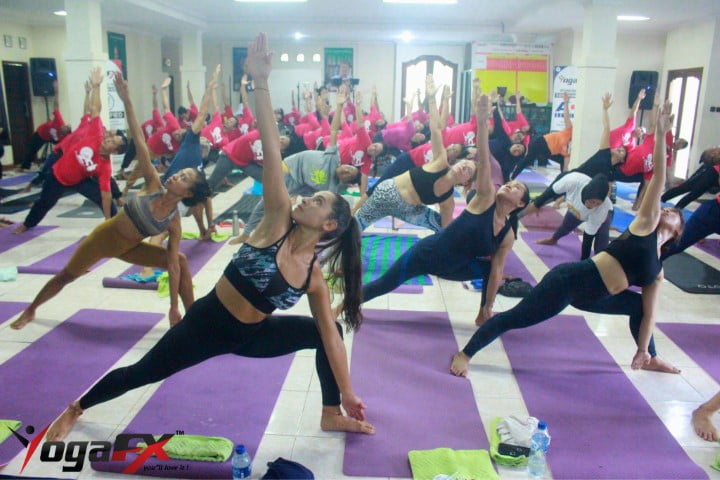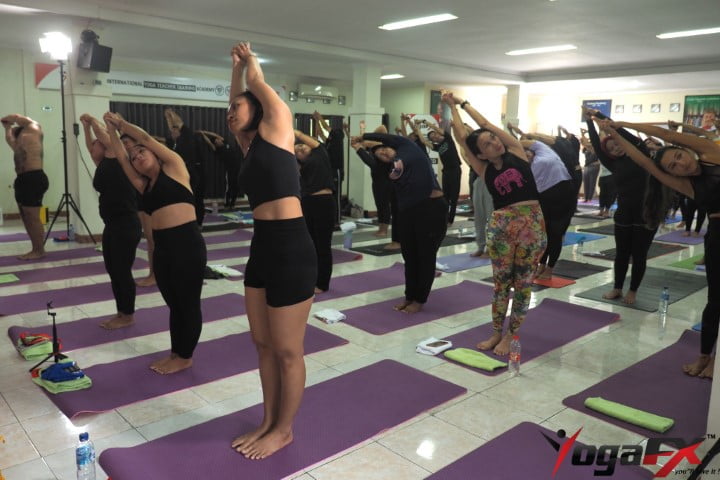
Are you interested in taking your yoga practice to the next level? Look no further than hot yoga. With its rising popularity, hot yoga has captured the attention of yogis worldwide. In this article, we will explore the benefits of hot yoga compared to regular yoga and discover why practicing yoga in a heated room can take your practice to new heights. So, grab your mat, prepare to sweat, and delve into the world of hot yoga—the ultimate fusion of physical, mental, and spiritual transformation.
Hot yoga and regular yoga both offer numerous benefits for the mind, body, and spirit. However, the heated environment of hot yoga adds an extra dimension to the practice, amplifying its effects. Let’s dive into the specific advantages that hot yoga brings to the table.

Benefits of Hot Yoga
1. Increased Flexibility and Range of Motion:
The elevated temperature in a hot yoga studio helps warm up the muscles, ligaments, and joints, making them more pliable. This allows for deeper stretching and improved flexibility.
2. Intensified Workout and Calorie Burn:
The heat in hot yoga classes elevates the heart rate and metabolic rate, leading to a more intense cardiovascular workout. As a result, hot yoga can help you burn more calories compared to regular yoga, aiding in weight loss and maintenance.
3. Detoxification through Sweating:
Sweating is a natural way for the body to eliminate toxins. The high temperature and humidity of hot yoga classes induce profuse sweating, promoting detoxification and cleansing of the body.
4. Improved Cardiovascular Health and Endurance:
The challenging nature of hot yoga, combined with the heat, helps strengthen the cardiovascular system, improving heart health and endurance over time.
5. Increased Mindfulness and Focus:
The heat and intensity of hot yoga demand heightened concentration and mental focus.
6. Enhanced Muscle Strength and Tone:
The combination of heat and challenging poses in hot yoga engages and strengthens various muscle groups, including the core, arms, legs, and back. Regular practice can lead to improved muscle tone and overall strength.
7. Stress Reduction and Relaxation:
Hot yoga provides a unique opportunity to release tension and stress. The combination of deep breathing, mindfulness, and physical movement helps calm the nervous system, promoting relaxation and mental well-being.
8. Improved Balance and Stability:
Balancing poses are a fundamental part of yoga, and the added challenge of balancing in a heated environment further enhances proprioception and stability. Regular practice can improve balance and stability both on and off the mat.
9. Enhanced Lung Capacity and Breath Control:
The deep breathing techniques practiced in hot yoga help expand lung capacity and improve respiratory function. This can have a positive impact on overall health and endurance.
10. Mind-Body Connection and Emotional Well-being:
Hot yoga encourages a deeper connection between the mind and body. The intense physical practice combined with the heat creates a profound sense of presence and self-awareness, fostering emotional well-being.
“WHATEVER PRESENT LIFE MOMENT IS NOW Accept It As If You Choose It Because Your Person That Makes Your Own Choices In Life”
Benefits of Regular Yoga
While hot yoga offers unique advantages, it’s important to acknowledge the benefits of regular yoga as well. Regular yoga practice, regardless of temperature, can contribute to:
1. Increased Flexibility and Range of Motion:
Like hot yoga, regular yoga improves flexibility and range of motion through consistent stretching and asana practice.
2. Stress Reduction and Relaxation:
Regular yoga practice promotes relaxation, reduces stress levels, and enhances overall well-being through mindful movement and breath awareness.
3. Improved Posture and Alignment:
Regular yoga practice emphasizes correct posture and alignment, leading to improved body posture and reduced muscle imbalances.
4. Increased Strength and Muscle Tone:
Yoga poses, such as plank, downward dog, and warrior poses, help build strength and tone muscles through isometric contractions.
5. Enhanced Balance and Stability:
Yoga poses that challenge balance, such as tree pose or eagle pose, improve balance and stability by strengthening the muscles and improving proprioception.
6. Improved Breath Control and Lung Capacity:
Yogic breathing exercises, such as pranayama, enhance breath control, increase lung capacity, and improve overall respiratory function.

Comparison of Hot Yoga and Regular Yoga
1. Physical Intensity and Calorie Burn:
Hot yoga generally offers a more intense physical workout and higher calorie burn due to the elevated temperature. Regular yoga, while still beneficial, may have a lower intensity level.
2. Detoxification and Cleansing:
Hot yoga’s heated environment promotes detoxification through sweating. Regular yoga also aids in detoxification, but to a lesser extent.
3. Mind-Body Connection and Mindfulness:
Both hot yoga and regular yoga emphasize the mind-body connection, but the intense heat of hot yoga can deepen the focus and presence during the practice.
4. Variation in Room Temperature and Humidity:
Hot yoga is typically practiced in a heated and humid environment, while regular yoga classes can have varying room temperatures depending on the style and instructor’s preference.
5. Personal Preferences and Goals:
The choice between hot yoga and regular yoga ultimately depends on personal preferences, goals, and individual needs. It’s essential to listen to your body and choose the practice that aligns with your desires and comfort level.
Choosing the Right Yoga Practice for You
When considering hot yoga versus regular yoga, it’s important to keep in mind the following factors:
1. Fitness Level and Goals:
Assess your fitness level and goals. If you thrive in challenging and intense environments, hot yoga might be a suitable choice. If you prefer a more gentle and relaxed practice, regular yoga may be more appropriate.
2. Listening to Your Body and Practicing Moderation:
Regardless of the style, it’s crucial to listen to your body and practice moderation. If you have any health concerns or medical conditions, consult with a healthcare professional before starting any new yoga practice.
3. Exploring Different Styles and Classes:
Yoga encompasses a vast array of styles and approaches. Experiment with different classes, including hot yoga and regular yoga, to find what resonates with you the most.
Conclusion: Embrace the Benefits of Hot Yoga and Regular Yoga
In conclusion, both hot yoga and regular yoga offer numerous benefits for physical, mental, and emotional well-being. Hot yoga provides the added advantages of increased flexibility, intensified workout, detoxification, and improved cardiovascular health. On the other hand, regular yoga emphasizes relaxation, stress reduction, posture alignment, and breath control.
By understanding the unique benefits of each practice, you can choose the style that suits your preferences, goals, and overall well-being. Whether you opt for the heat of hot yoga or the soothing flow of regular yoga, both paths lead to greater self-awareness, inner strength, and overall health.
Unlock your full potential and embark on a transformative journey with YogaFX hot yoga teacher training. Experience the power of hot yoga firsthand and become a certified hot yoga teacher. Join our YogaFX hot yoga teacher training program today and discover a world of possibilities in the field of yoga instruction.














































